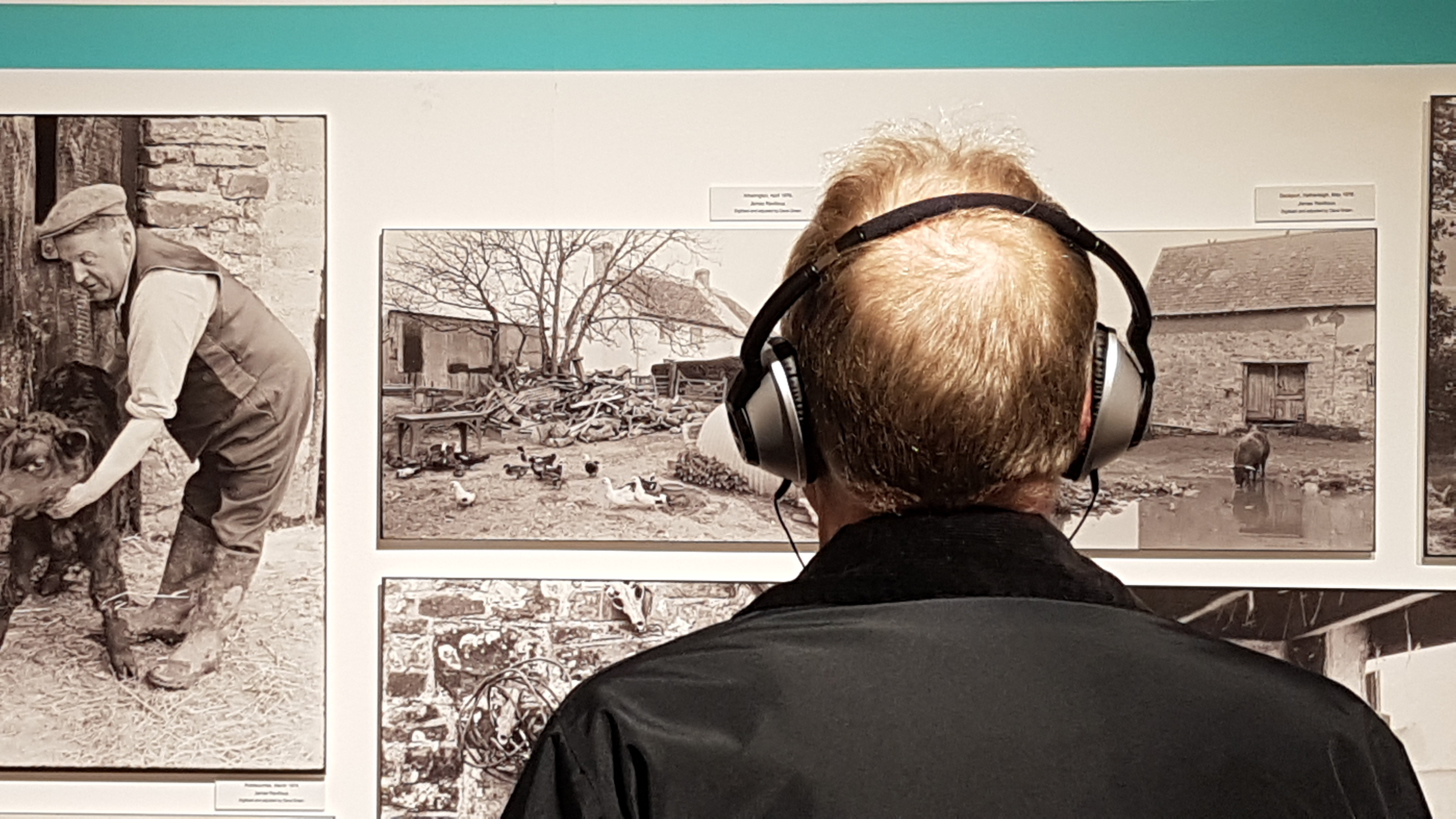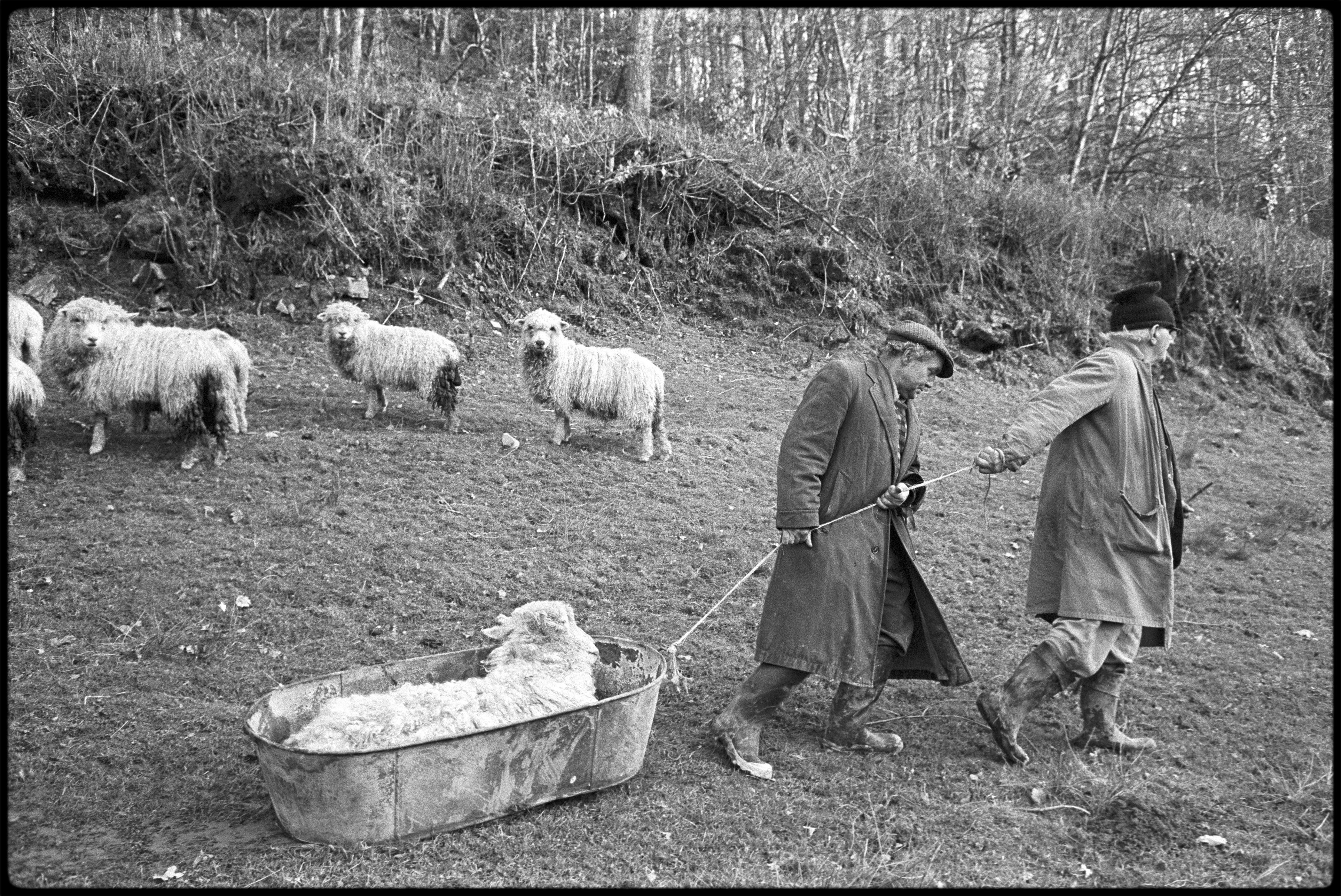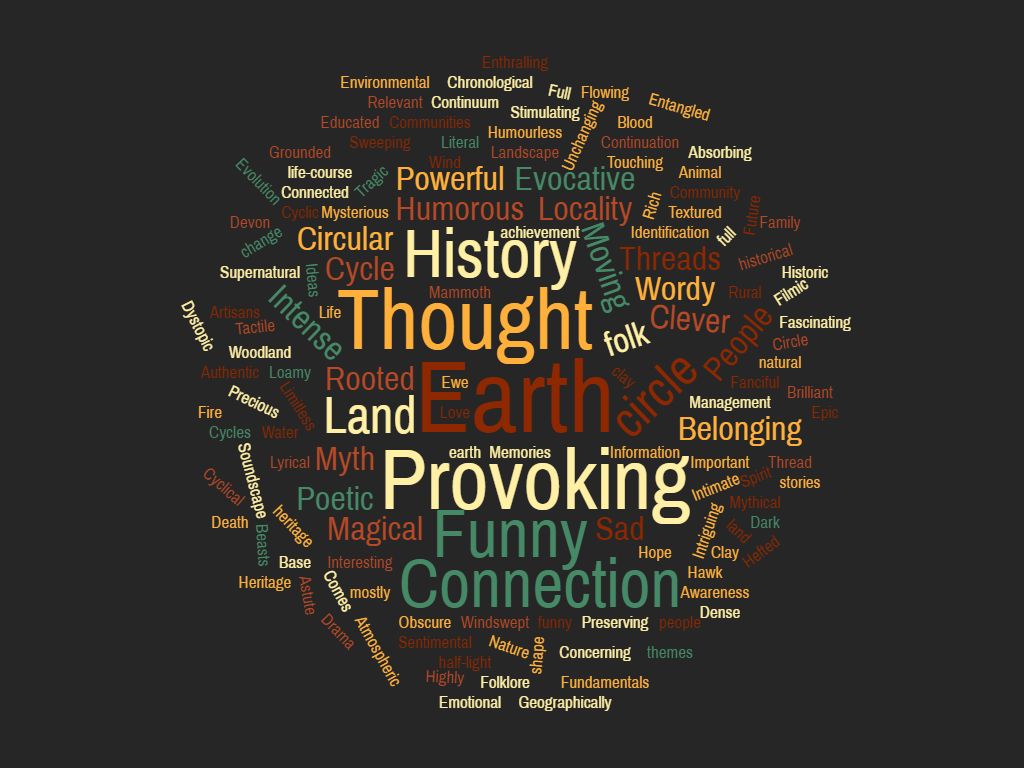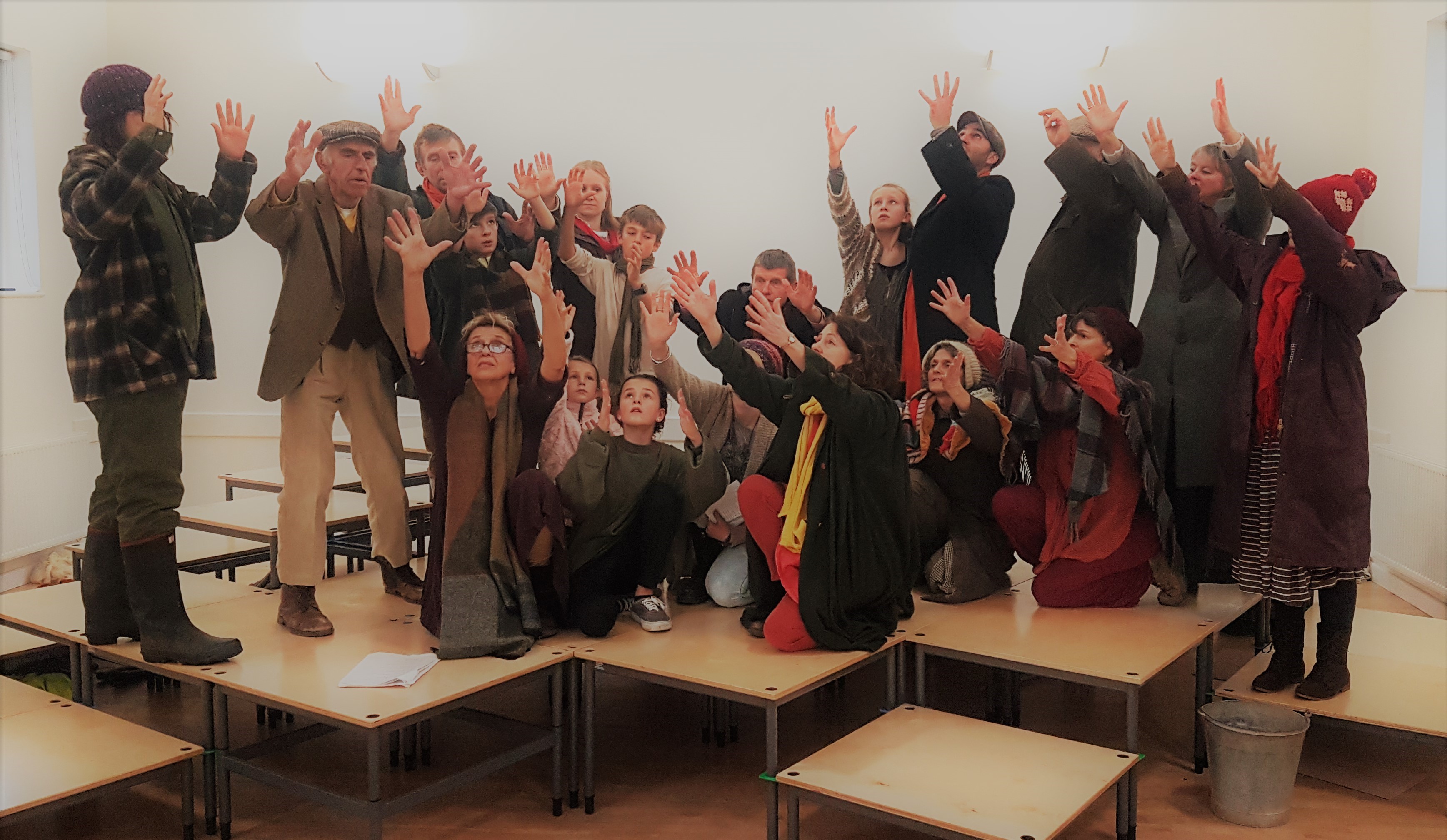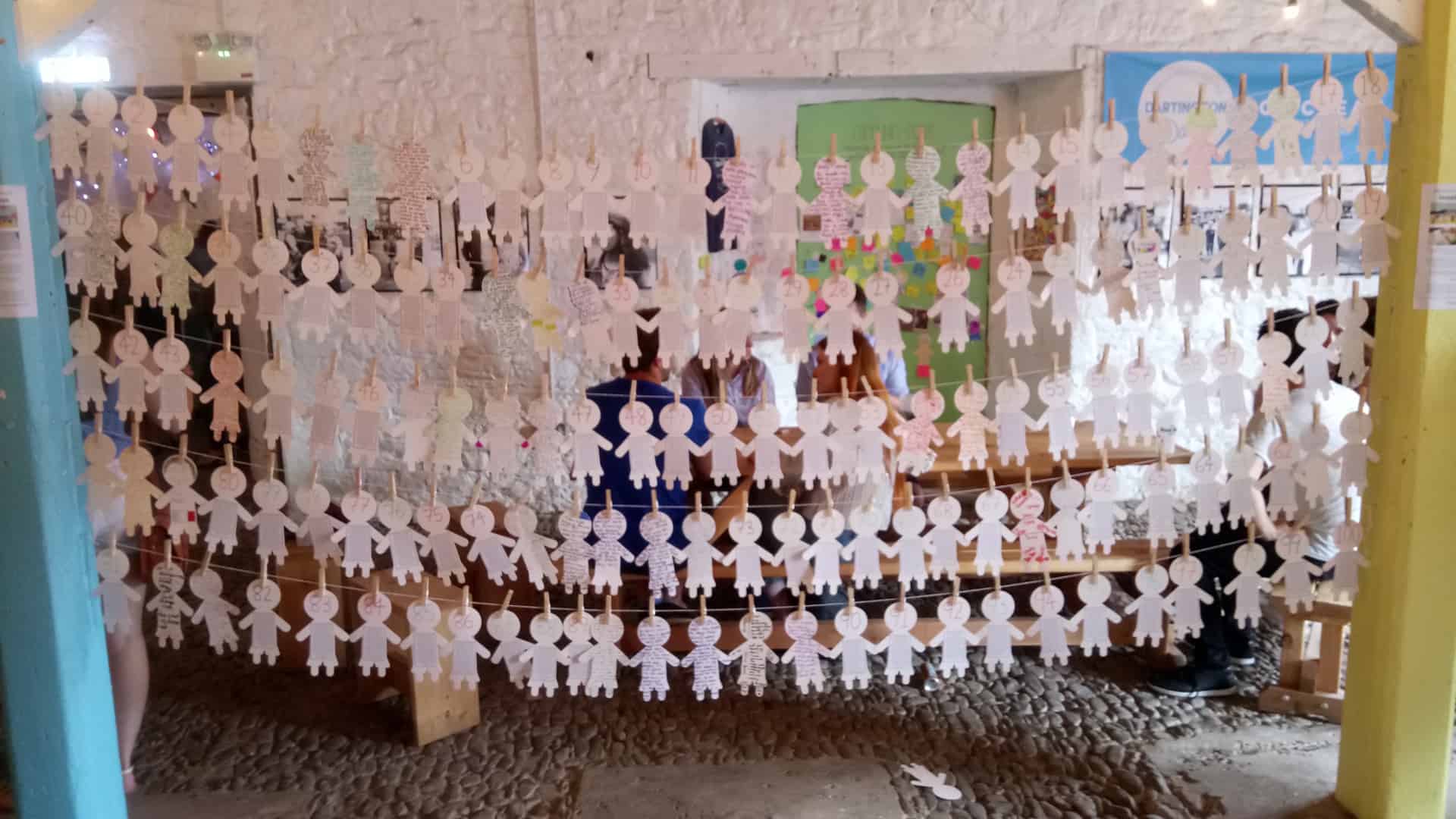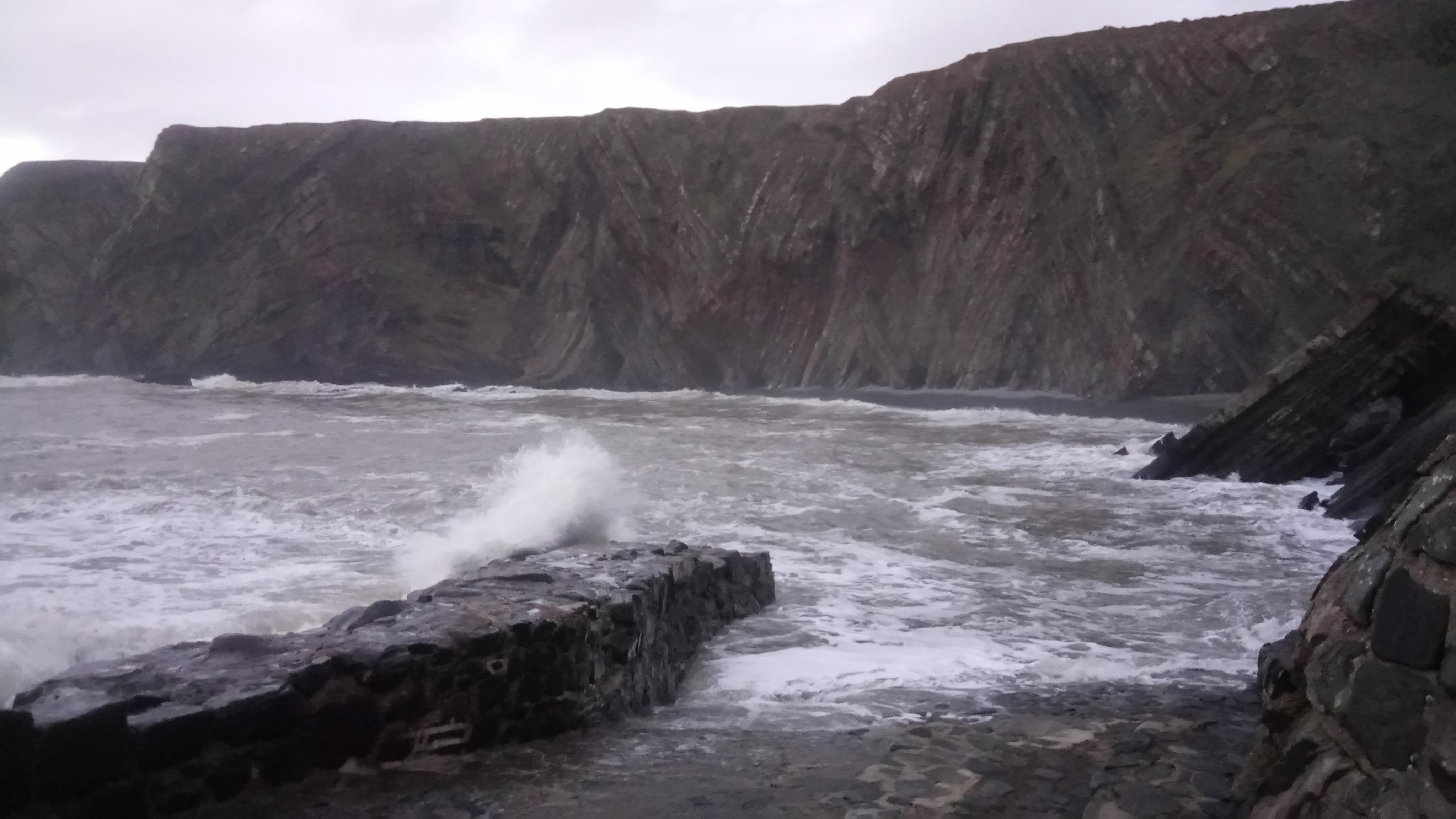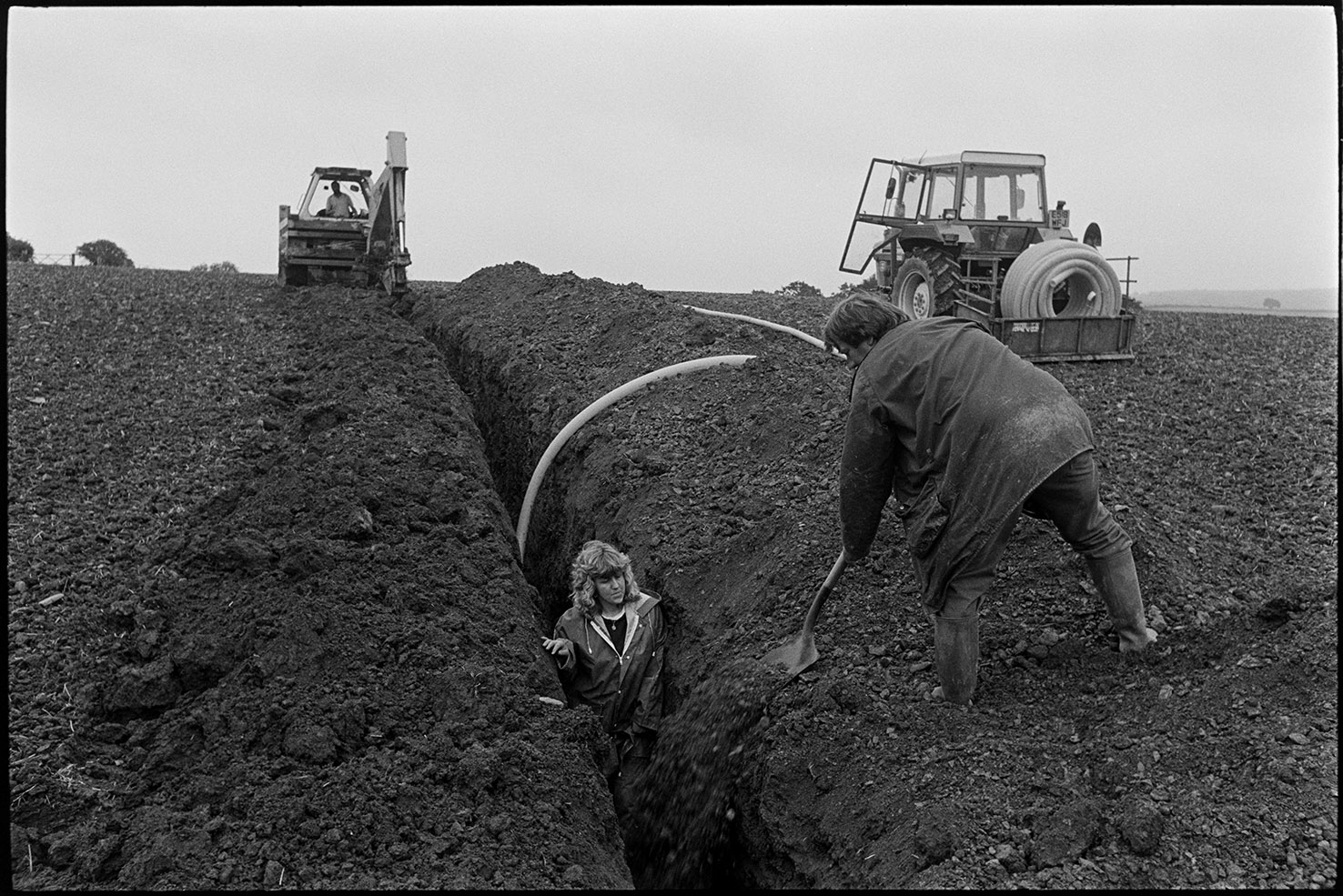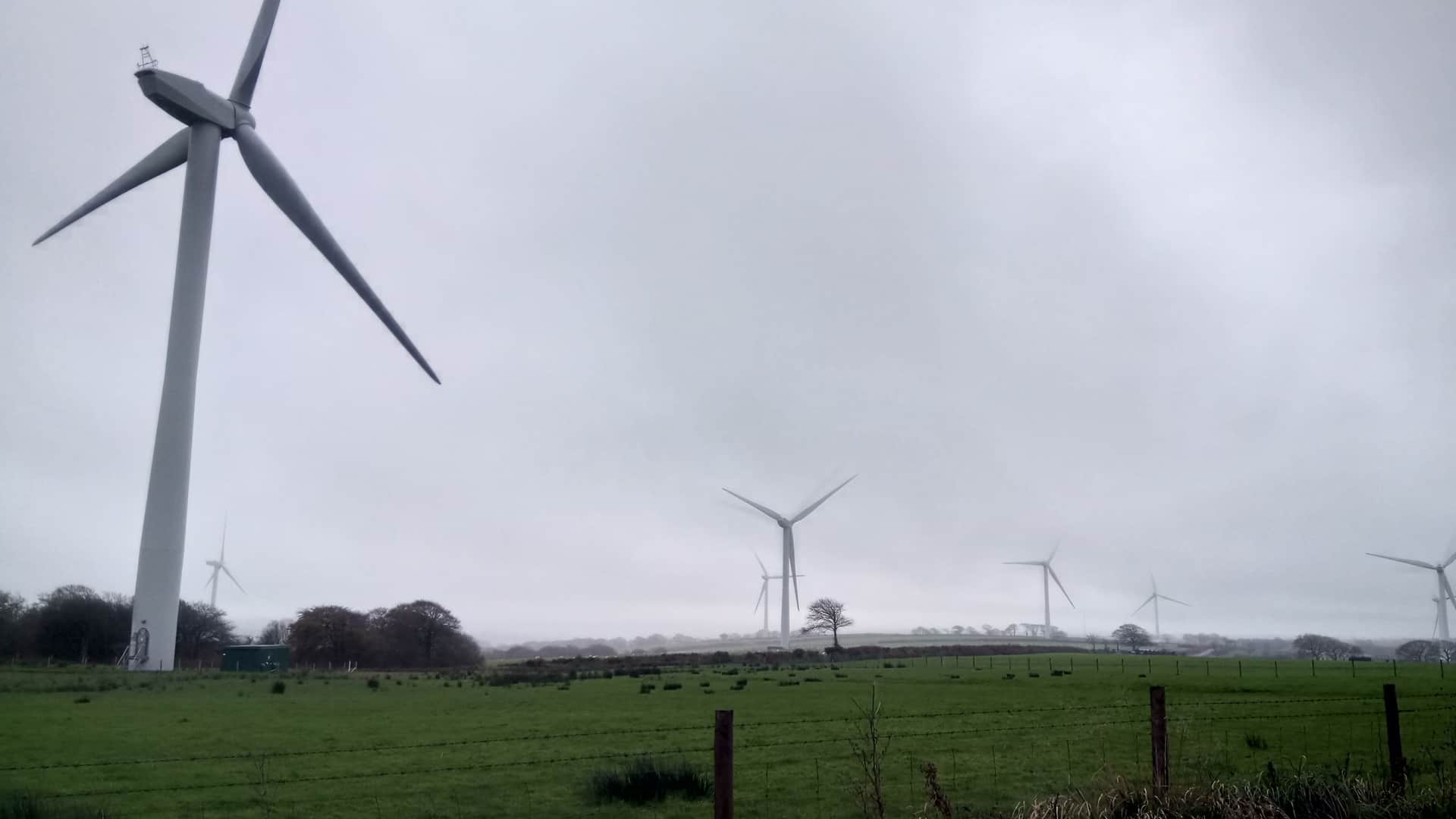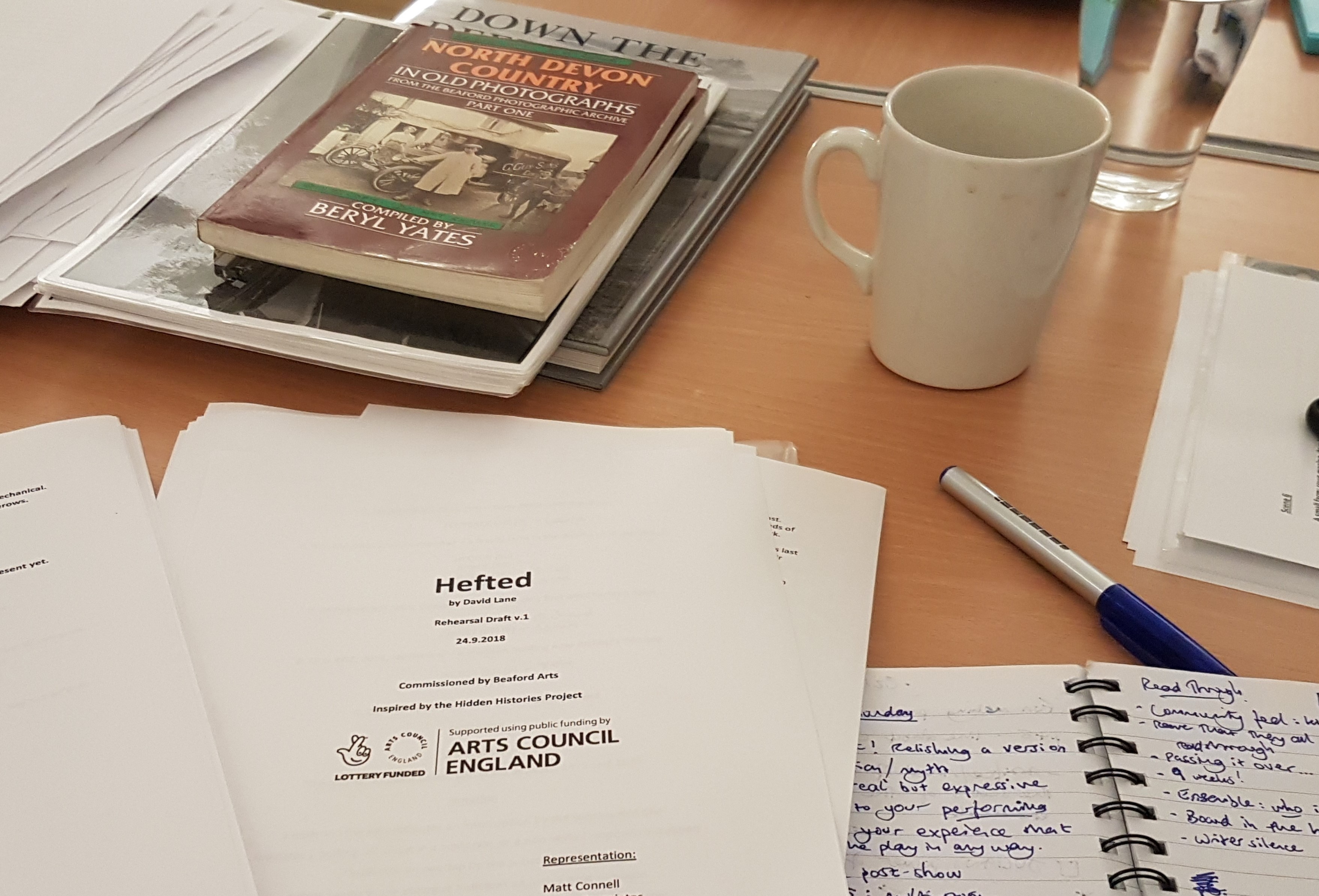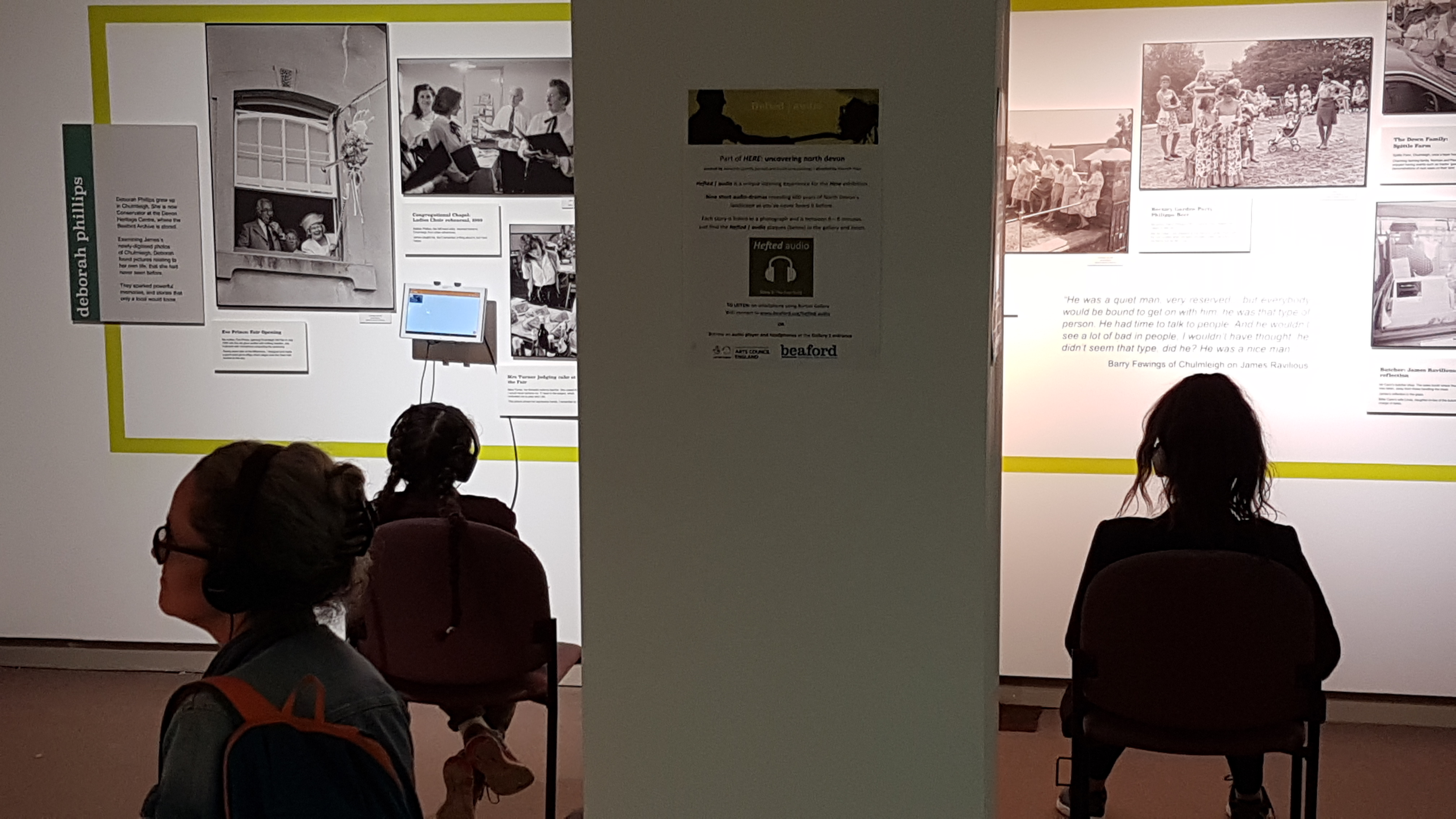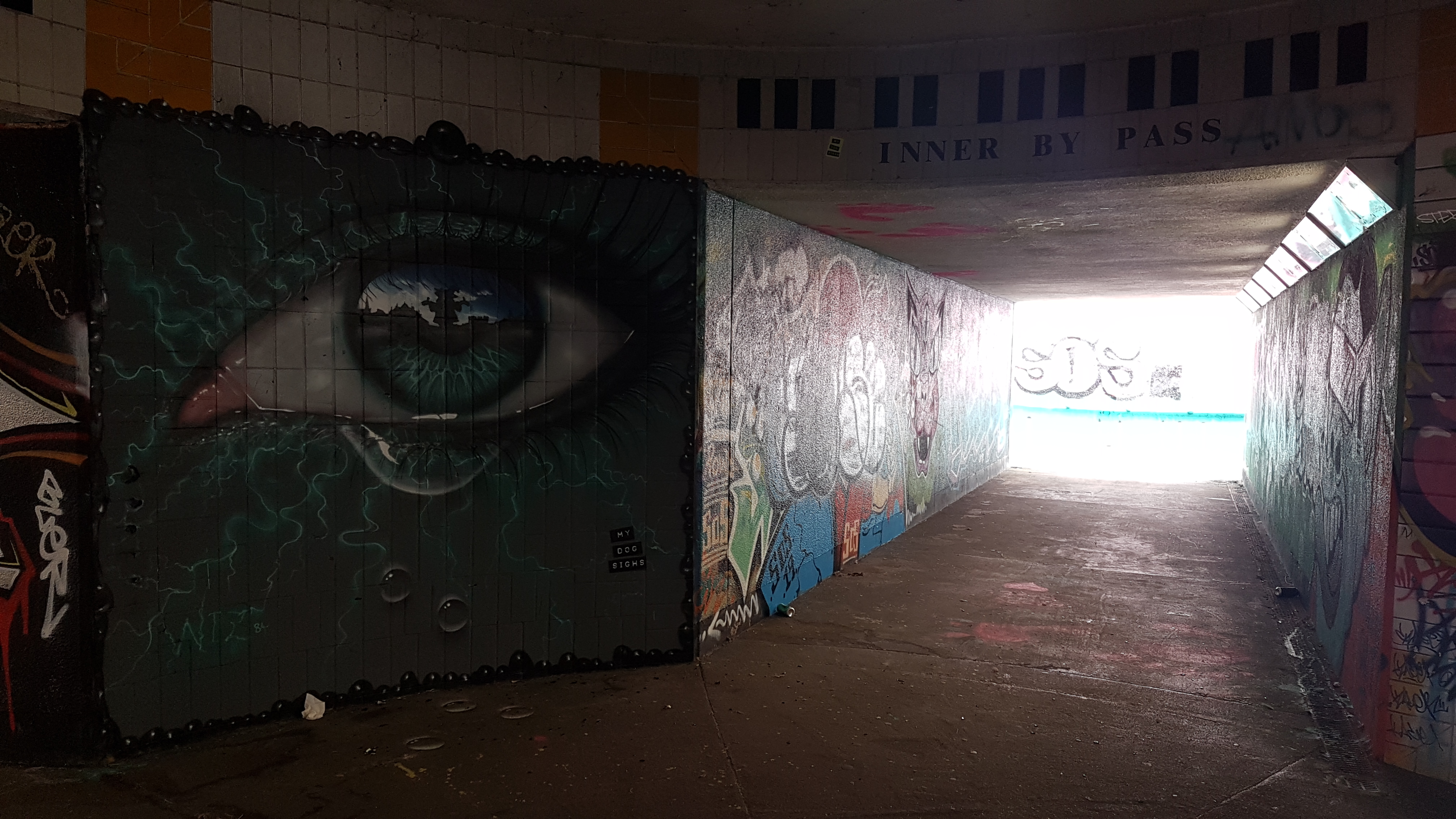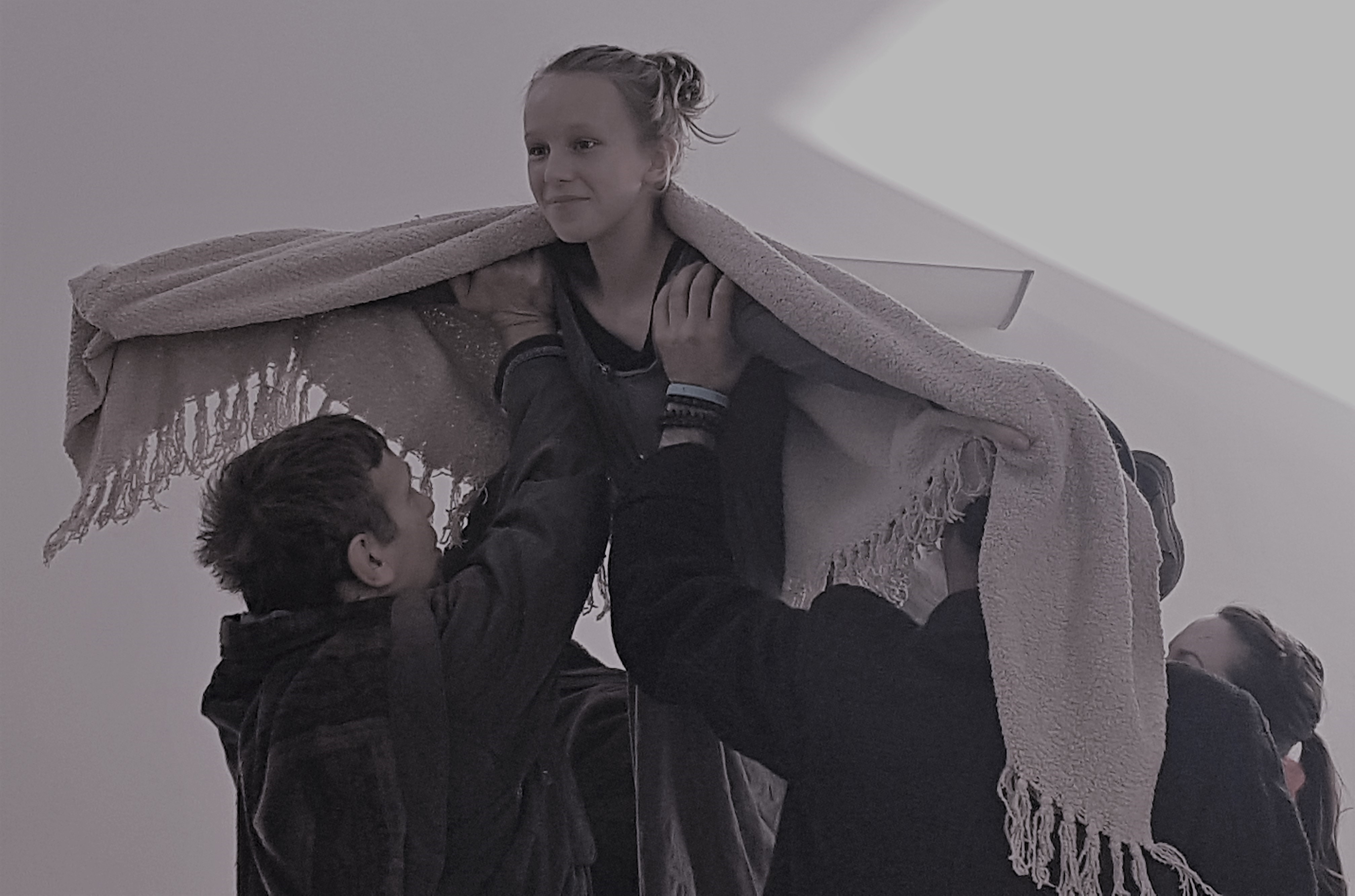This year I took on writing for audio for the first time, supported by Arts Council England to work with sound designer Adrienne Quartly and adapt my North Devon-inspired stage play Hefted for online listening.
This is the first in a series of six blogs reflecting on what I learned.
The Beginning
My own interest in writing a play based in North Devon began with a rain-swept sighting of Lundy Island from Woolacombe Bay in November 2015, wondering what sort of story could be created that might animate the history of its landscape and inhabitants.
Two years later in 2017, Hefted was commissioned by Beaford via ACE and HLF funding, as part of a wider three-year heritage project.
The aims of that project were to digitise and enliven for local communities the Beaford archive of documentary photographs of life in rural North Devon, originally shot by James Ravilious and Roger Deakins across the 70s and 80s.
Archie Parkhouse and Ivor Brock moving a sick ram, Dolton, March 1976: James Ravilious for the Beaford Archive
The Development Process
Using the fascinating oral histories of North Devon people in response to Ravilious’ newly digitised images, and a series of research interviews with ecologists, scientists, local councillors and history groups – in addition to workshop collaborations with High Bickington Primary School and North Devon amateur theatre companies NOMADS and Croyde Players – the story of Hefted was gradually created: a 600-year myth inspired by truth, that considered the past, present, and future.
Early drafts of the play were shared with over 30 people from North Devon across three generations, with a final draft read script-in-hand to a packed Swimbridge Hall in July 2018.
The audience’s responses to the play were captured afterwards, populating a huge word bank with evocative impressions, emotions and ideas.
Production
Beaford then seized upon a unique opportunity to have the play fully produced whilst also bringing in the community from the landscape itself. They invited North Devon’s own Multi Story to lead a mixed community and professional cast to rehearse the play from October 2018.
Over just nine weeks this ensemble cast came together in Swimbridge to prepare Hefted for its premiere in December last year: a sold-out production with added performances that became Beaford’s fastest-selling show in ten years.
But such was the impact of that show on participants, audiences and the artistic organisations alike, neither Beaford, MultiStory nor I wanted that to be the end of the script.
A Multi-Purpose Text?
The original funding from ACE in September 2017 wasn’t just to write a play.
In fact, it was led by two connected artistic and strategic research questions posed by Beaford and myself.
As a rural arts producer, Beaford wanted to explore how they could work differently with a writer – not only embedding them in the landscape and audiences for the work as part of the development process, but also making one commission flourish into as many opportunities for people to connect with the work as possible.
They wanted to break the mould of a single small-cast rural tour, after which plays often disappear from sight.
They also wanted their work to extend beyond rural audiences and into metropolitan and urban centres too – might the specificity of the rural bring about the universality of bigger human themes?
As a writer coming off the back of accidentally creating my first verbatim installation piece (a rather home-made exhibition for the Boat Shed Theatre in Exeter exploring community perspectives on culture West of the Exe, pictured below), I was curious about writing a text that could be easily adapted into other forms.
Was it possible to write one single multi-purpose text that could live on as an audio piece, an installation, a piece to be read, a piece to be performed by casts of thirty or casts of four, in a studio or site-specifically, a piece that could even be chopped up, rearranged and re-structured at will?
Could one single script do that?
Core Dramaturgy
From the outset once the research had been gathered – pushed and challenged along the way by brilliant artist development producer Emily Williams – I was trying to make founding dramaturgical choices that could serve that question.
What kind of underlying architecture would support a text to be seamlessly transferred or quickly adapted across different mediums? What sort of storytelling time frame?
What sort of aesthetic or style of writing could be transferable, particularly between audio and stage?
At this point in the process we didn’t know what the production context would be. The funding only covered our exploration of writing a multi-purpose text for a rural arts organisation, which came from a period of being embedded in the landscape and its people. It would take us up to a third draft of a text. What that would lead to in terms of production was undecided, and not yet funded.
Time, Space, World and Style
I was reminded by Emily to be led by the demands of the research and the story I’d found within it, rather than any particular production outcome.
The relationship between North Devon’s landscapes and its people has an epic sweep, stretching back to the earliest civilisations.
I knew the story needed to have a similar feel, capturing a sense of a mythology, of tales told and collected and passed forwards through time, echoing the oral history gathering that had fuelled the research.
This pointed me towards an episodic structure – a play of nine parts, across six hundred years, set in nine distinct landscapes in North Devon, from the rugged coast to the deepest valleys, from the small family farms to the urban expansion of Barnstaple.
The dramatic action itself would be isolated within each scene – mini-stories of people in the landscape that could both stand alone, but also connect as part of a larger whole.
They would also resonate with themes moving through nine stages of life from beginning to end: so Scene 1 would be ‘Birth’ and Scene 9 would be ‘Death’ and we’d visit childhood, middle-age and retirement along the way.
We’d also move through the calendar year from January to December, capturing the huge seasonal changes one can experience in the area, and allowing the working life of people to be reflected in snapshots – agricultural preparations in springtime, the harvest in the autumn, the economic impact of holiday-makers in the summer and the barren soils of winter.
Weaving through the whole was one constant question – who stays to take stewardship of the land, and who leaves forever – and one constant world, where magical transformation became part and parcel of how people experienced the landscape.
At the back of my head however, even at the treatment stage, the scenarios for each scene were also deliberately contrived to lend themselves to a variety of writing styles.
Some I knew would work brilliantly with a heightened poetic direct address; others would rely heavily on sound to drive the narrative; others might require choric and visual set pieces; some would be ‘conventional’ naturalistic scenes, and some might contain a combination of these.
However, this variety wasn’t just about arbitrarily fulfilling the potential of the ‘multi-purpose’ brief – it came directly from the research and the sheer diversity of generational, historical, ecological, economic, political and agricultural experiences in the research.
Without realising it, North Devon as a multi-purpose landscape had become a perfect vessel for exploring the possibility of a multi-purpose text.
Content and form could dance together and try to find their shared rhythm.
But writing with multiple performance contexts in one’s head is nigh on impossible for me. As a writer, I needed to know what I was writing for: all scriptwriting is just the writing of potential – that potential is then realised by a collaborating team and an audience.
But if the potential outcomes in terms of the medium are intended to be multiple, how on earth do you make a choice?
I needed a limitation.
Production Limitations: Hefted Version 1
Audio was always in my mind – again, led by the research rather than the multi-purpose question. North Devon has a distinct soundscape to accompany its sheer array of landscapes.
It’s one of the few places you can be completely out of earshot of traffic and human activity, and within fifteen minutes’ drive hit the busy link road and, further up, the urban bustle of Barnstaple.
From the dramatic crashing of ocean on jagged outcrops of rock in Hartland Quay, to the chirp and rustle of a woodland at dusk; from the eerie moan of winds whipping across Dartmoor punctuated by the bleating of sheep, to the delicate swishing of surface breeze nudging the sands across the dunes at Crow Point, this is a breathtaking sonic landscape, and the script’s treatment took note.
In April 2018 the research partnership between myself and Beaford culminated in a useful limitation.
The script’s treatment, Beaford’s Director Mark Wallace noted, lent itself to a production of professional clout – but it also seemed inseparable from the authenticity of the region captured within its ideas.
To combine the two could create something remarkable – which is where the idea of a professionally-led community ensemble came from – but it would mean the script limiting itself to that theatrical context in the writing up of the drafts across the next few months.
Mark also knew that producing process could happen quickly, and we could be up by the end of the year in a little village called Swimbridge, in co-production with MultiStory and the residents.
This would be Hefted Version 1.
Touring Limitations: Hefted Version 2
Towards the end of the rehearsal and production process in Swimbridge in 2018, it was clear that the piece had captured the imaginations of MultiStory. They were eager to create a fully professional touring version of the play – only with a cast of four, rather than twenty or so.
This limitation led to a cutting and editing job, trimming length and chorus set pieces, re-staging the visual invitations left for a huge ensemble to create, and alongside MultiStory’s vision for a revised touring aesthetic for the show, leaving them with an abridged version of the script which still offered space for them to play and create as a quartet of performers.
This version has since toured successfully to South Devon and through North Devon and is still touring now, with performances in Chulmleigh and Honiton next week (14 / 15 November).
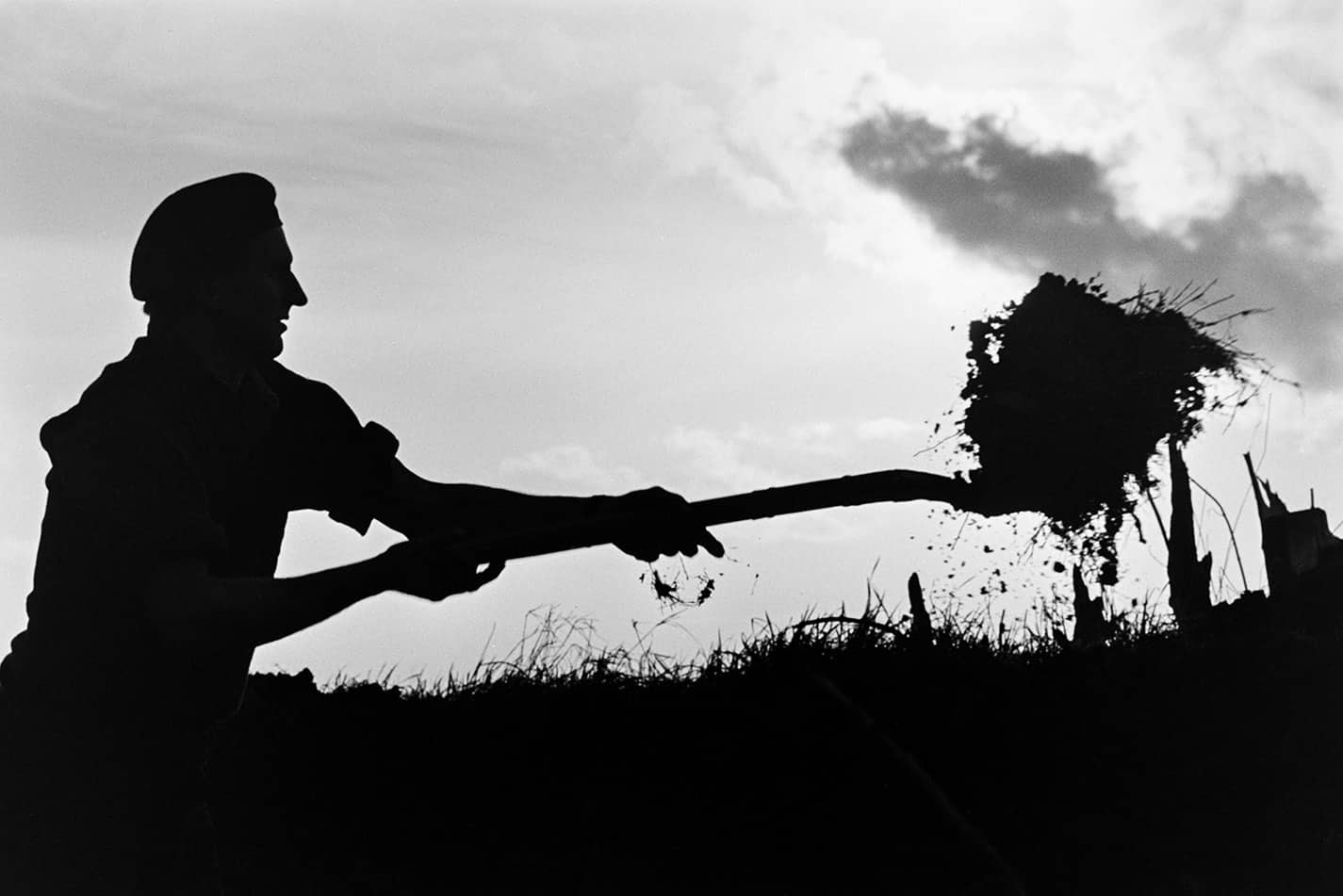 Publicity Image: originally by Roger Deakins for Beaford Archive
Publicity Image: originally by Roger Deakins for Beaford Archive
The next ambition is to test the piece’s reception off the rural touring circuit – moving to small urban arts centres to bring in a new audience for a play that might be rurally-based, but asks universal questions about our environment, our relationship to our birthplace, and the nature of ecological stewardship in the twenty-first century.
Aesthetic Limitations: Hefted Version 3
As rehearsals were underway for Version 1, I was underway with a new Arts Council application to create an online digital audio version of Hefted in collaboration with a sound designer. This time there was no production money from Beaford.
Instead I would self-produce, with support again from Emily and plenty from Beaford in-kind, alongside some light-touch partnership with Kaleider in Exeter and the university’s drama department – but as an artist, this was completely new territory as both producer and maker.
I was a bit bewildered, a bit nervous, and the goalposts seemed to subtly shift with each new conversation.
As sound designer Adrienne Quartly asked when I phoned her with the good news about the funding, in a question characteristic of the next five months of the process – ‘what exactly are we making again?’.
We finally settled on one focus: the audio piece was to be made for headphones, would be held online on the Beaford website for anybody to listen to as they might a podcast drama, but would also be tested out as:
1. an audio installation within Beaford’s Hidden Histories archive exhibition at The Burton Gallery in Bideford, connecting the stories back with the photographs that inspired them
2. a site-specific audio walk in partnership with Kaleider and Exeter University, testing the collision of rurally-embedded work within a real urban environment, to see what new ideas and thoughts arose
3. an accompaniment to heritage exhibitions in eight North Devon villages
This project was designed to explore answers to some of the questions we hadn’t answered in the first commission: namely a complete shift of medium from stage to audio, and the relationship of urban audiences and spaces to rurally-embedded material.
We’d suddenly moved from a multi-purpose text, to a multi-purpose audio drama – something that would be contested, discussed and reframed throughout the project, where the key makers were also all relative beginners in the specific medium of audio drama.
Exe Bridges Underpass – an eventual location for one of the Hefted|Audio stories
The creative journey would be a co-exploration with sound designer Adrienne Quartly, eventually directed by Theatre Uncut’s Hannah Price, and mentored by BBC audio drama writer/producers Sara Davies and Marion Nancarrow.
Sara and Marion had spent their careers in audio drama. For Adrienne, Hannah and I, although we brought a variety of skills in writing, sound design and audio performance to the table, it was our first go.
I’ll be kicking off the specifics of that creative journey in the next blog.
So… Can a Text Be Multi-Purpose?
Yes.
And there was a point in the process where to have only answered that question would have meant writing nine short stories.
Those nine would then have been offered up as texts to record, devise from, present as printed text, publish as short tales, stage as collective or solo storytelling, include within a photographic exhibition, and so on.
But as a joint endeavour between playwright and arts producer, we would have felt short-changed. The opportunity (and our desire) to author something unique for Beaford, the audiences and makers in North Devon created a natural limitation to answering the question above.
It has by no means limited the outputs for Hefted which has since soared from strength to strength.
To have three versions of one commission all successfully made and experienced, with one of them still touring and a further future ahead of it, is an outcome of which all of us are hugely proud.
I suppose it would be truer to say that the commissioning idea was successful as multi-purpose.
The whole process from the research, through the original core dramaturgical choices, into the writing and then adapting into different contexts, has all come from one single idea.
Hefted is about the people and the land, its past, present and future: and that has been a multi-purpose concept successfully rendered into several striking productions.
Next Blog – Adapting to Audio: Cutting Out Space
For tickets to MultiStory and Beaford’s touring version of Hefted click below:
Thursday 14 November 7.00pm, Chulmleigh

